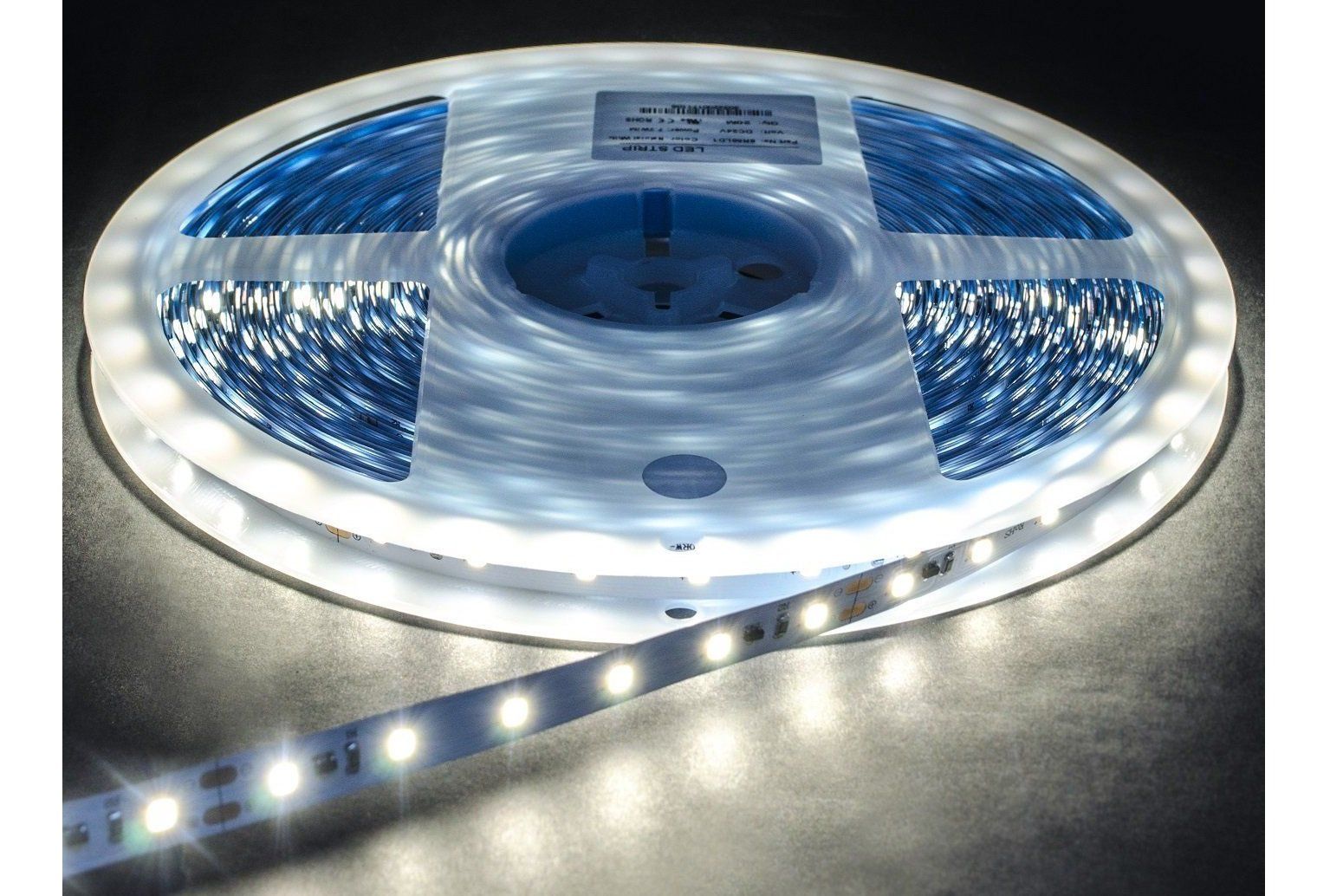12 Volt vs 24 Volt LED Strip Lighting : What’s the difference?
Let’s get technical, just for a second.
Voltage (V) is defined as the difference in electrical potential between two points, and in layperson’s terms, can best be understood as electric pressure. The higher the voltage, the greater the force ‘pushing’ electricity through a wire or device. Higher voltage doesn’t necessarily mean more power, as a large voltage pushing a small amount of current (A, or amps) may have less total power (W, or Watts) than a smaller voltage pushing a large amount of current, as calculated by the formula P (Power, in Watts) = V (Voltage) x I (Current, in Amps).
HitLights sells both 12V and 24V products so the question, then, is which is better (if any) - and when when should you choose one over the other?
(You can find all of our 24 volt products here)
He’s going for distance.

From the above explanation, a few things can be inferred.
First, the same amount of total power can be had by various combinations of voltage and current. This means that if, in some cases, higher or lower voltages or currents are preferable, then we can choose the optimum combination of both to supply the necessary power to wherever it needs to go - in our case, light emitting diodes (LEDs).
Second, if the pressure analogy holds true, and you can imagine two hoses supplying an equal flow of water (power) at different pressures (voltage) thanks to an adjustable nozzle, then you can expect that the higher voltage but lower volume hose will shoot out the water further than the hose with lower pressure and larger volume. If you’ve gardened with an adjustable hose nozzle, you’ll have noticed that this is true - a smaller hole for the water shoots it further, at higher pressure, while not affecting the amount of water expelled.
Third - again, if the pressure analogy holds true - if you’re shooting very high pressure water out of a hose, you might expect that these higher pressures require special materials or construction methods to withstand this force.
What does it all mean?

Here’s the short answer. If you need a short run of LED strip, use twelve volts DC. If you need a longer run - that is, if you need to push your power further - use the ‘higher pressure’ twenty-four volts DC
Longer answer :
All conductors of electricity and the electrical components in a circuit contribute to resistance (R) and resulting voltage drop (the difference between the input voltage at the beginning of the run and the voltage at the end of the run). The longer a run of conductor (in our case, LED strip), the more voltage is lost as heat. (Side note, voltage drop can be reduced, but not eliminated, by using a higher quality and thicker conductor, which you’ll find on our nicer Premium and UL-Listed strips).
For a given length of LED strip of a certain type (conductor material, chip type, etc), you’ll lose a certain amount of voltage between the beginning and end. In the case of our 24V DC 2835 strips, which are twenty meters (~65 feet) long, we measured the beginning voltage at 23.91V and the end voltage at 21.23V - a difference of 2.68V, or 11.2%. Not bad for such a long run.
On a 12V strip, that same voltage difference of 2.68V would amount to 22% of the original voltage - an unacceptably high amount - so the LED chips at the end of the strip would be noticeably dimmer than the ones at the beginning.
(Note for electricians, engineers, and physicists - the above explanation is simplified for a layperson’s understanding. If you’d like to correct us, we’d welcome your input in the comments section)
So why not 24V DC all the time?

For our metaphorical hose pipe to provide this higher pressure water, it needs to be built to withstand the pressure. This means that all devices (strips, power supplies, and even controllers) that are designed to handle higher voltages are at least somewhat more difficult and expensive to manufacture and supply. These price differences range from the small (our 24V Dimmable Drivers and Power Supplies are only marginally more expensive than 12V models) to the slightly less small (our 24V LED light strips are 10-15% more expensive, per foot, than our 12V strips) - but they can add up. The 24V strips also come exclusively on 20 meter (~65 foot reels), which might be more than you need for smaller projects.
The shortest answer
If you need less than 32 feet (10 meters, or two standard 12V DC rolls) of LED strip, stick with 12V. If you need more, choose 24V. That’s no hard and fast rule, but a pretty good guideline. If you’re looking for multicolor RGB strips, then we don’t currently stock those in 24V DC, but there are some creative ways to extend the 12V runs to basically unlimited lengths.
Strip voltage is just one small factor in choosing the right LED light strip for your project - our free eBook, titled 'How to Choose LED Strip Lights' is an ideal guide in the next stage of your LED lighting journey.
--



3 comments
Aaron Lal
A really useful blog for beginners that really don’t know the difference. You have conducted thorough research and written a great post. Looking forward to seeing you soon in a new post. Keep up the good work
HitLights.com
Kathryn, give us an email at customerservice@hitlights.com and we’ll be happy to help you out!
Kathryn Perez